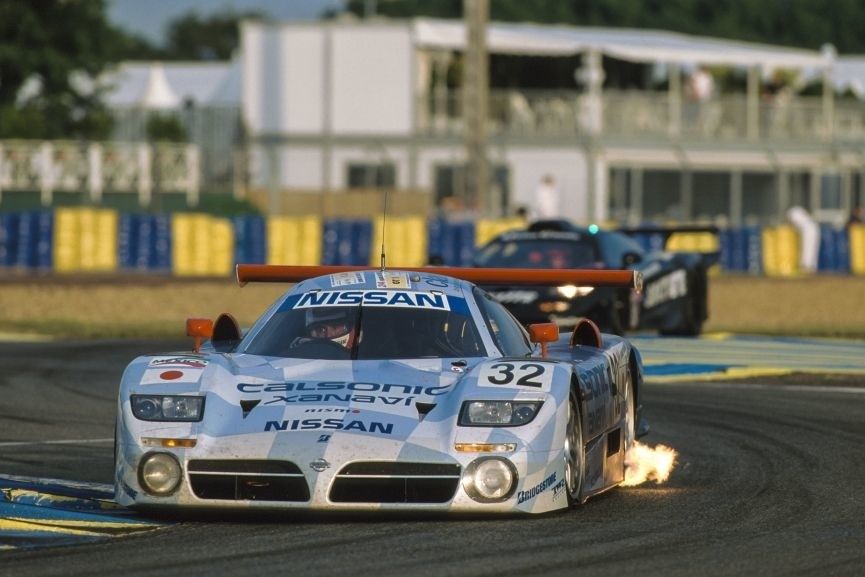Nissan R390 GT1 – Most Successful Nissan's Le Mans Car Ever
At the end of the 20th century, Japanese car manufacturer Nissan had a proper racing car which was competitive in the fight for the overall victory at 24 hours of Le Mans, the world’s biggest endurance race. Although Nissan didn’t reach victory, their car took the podium with the third place at the 1998 Le Mans race. The car we’re talking about is no other than Nissan R390 GT1, and it became and remained the most successful Nissan car ever at Le Mans.
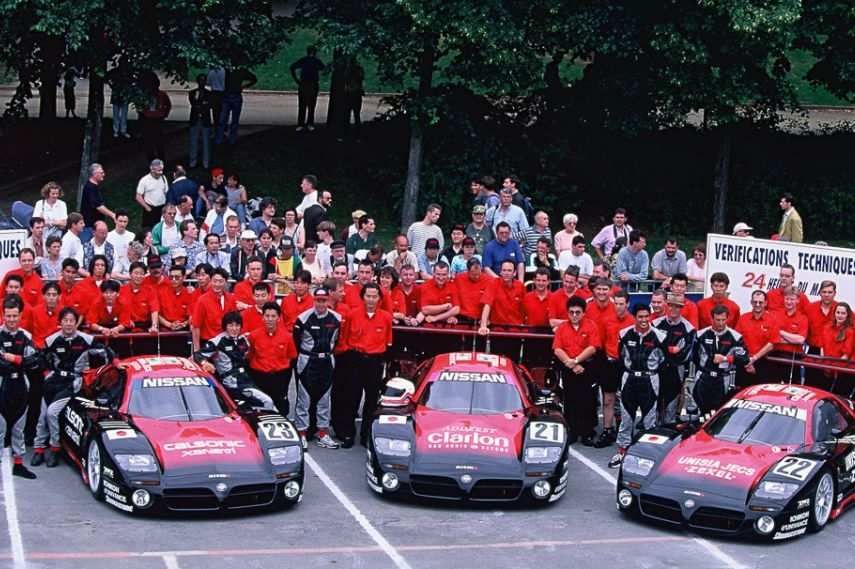
Three Nissan R390 GT1 cars debuted at Le Mans in 1997
Nissan needed a replacement for the unsuccessful Skyline GT-R LM
Nissan R390 GT1 was introduced in 1997, but the story began two seasons earlier, when Nissan Motorsports entered endurance racing, including Le Mans, with a GT1 version of the Nissan Skyline GT-R. The GT1 class was dominant at that time and McLaren F1 GTR won the 1995 Le Mans race. One Nissan’s car, under the banner of Nismo, finished 10th overall, and the other car didn’t finish the race. In 1996, the best Nismo’s Skyline GT-R LM finished in the 15th place at Le Mans.
Just two Nissan R390 GT1 road-legal supercars were built
Nissan’s management wasn’t content with such results and the construction of new purpose-built racing car was ordered. Following the naming tradition of the previous racing cars, the decision was made that the new car would be R390. The rules required a homologated road version, so two R390 road cars were built. It was enough to transition into the production of the racing version.
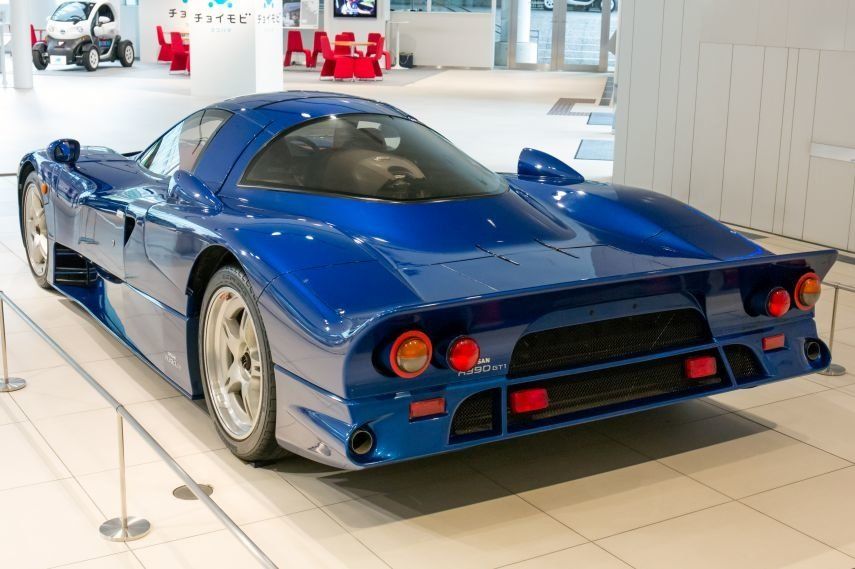
Just two R390 road cars were built
Nismo and Tom Walkinshaw Racing developed the new car
Looking for partners, Nissan turned to proved specialist Tom Walkinshaw Racing. TWR’s people Ian Callum and Tony Southgate were in charge of styling and aerodynamics, with the help of Nismo’s Yutaka Hagiwara. Southgate had Le Mans-winning Jaguar XJR-9 in his CV, so it was expected that he would satisfy the wishes of the Japanese bosses.
The old 3.5 V8 engine was chosen for the R390 GT1
Nismo and TWR engineers rejected the engine from the previous Skyline GT-R LM and they chose the old, but proven, engine from the Group C Nissan R89C. It was the VRH35Z, a 3.5-liter V8 engine with an aluminum block. Of course, the engine was upgraded and it produced a maximum of about 640 horsepower at 6800 rpm. Road car version had a 550-hp engine. Both versions used a 6-speed sequential gearbox.
After the prototype was built and underwent testing in England, two road cars were built in the Atsugi factory in Japan. One of the two road cars remained in Nissan’s property, and the other was sold to an unknown customer at an auction.
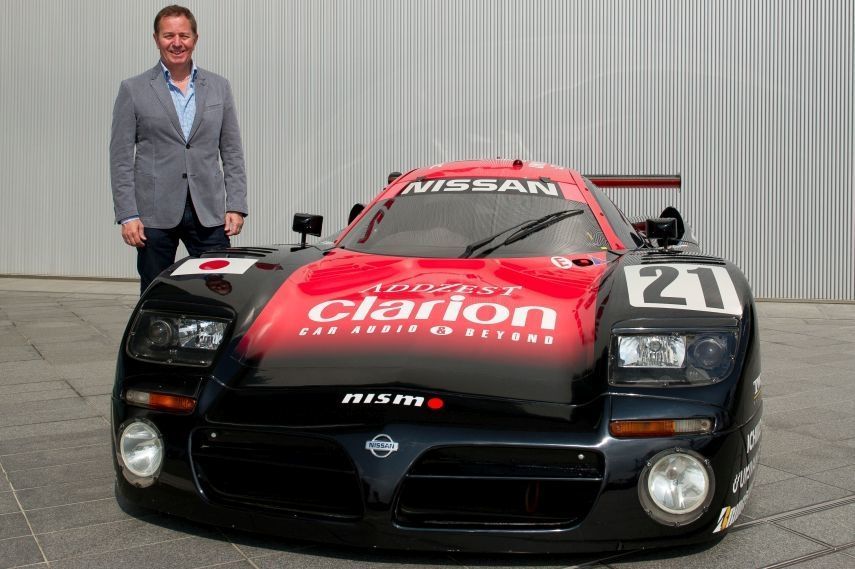
In 2011, Martin Brundle reunited with his 1997 Le Mans car
Three R390 GT1 cars at the debut 24 Hours of Le Mans
Three racing versions of the car were completed in time for the 1997 24 Hours of Le Mans. The vehicles had to be modified after the scrutineering but they were allowed to enter the race. Three cars with numbers 21, 22, and 23 were painted in black and red.
They showed impressive performance and speed at pre-qualifying in May, with Martin Brundle setting the best lap time of 3.43.15. In the qualifying for the race, the #21 car of Martin Brundle, Jorg Müller, and Wayne Taylor took the 12th starting place. The best qualifier was the #22 car of Riccardo Patrese, Eric van de Poele, and Aguri Suzuki, in the fourth place on the starting grid.
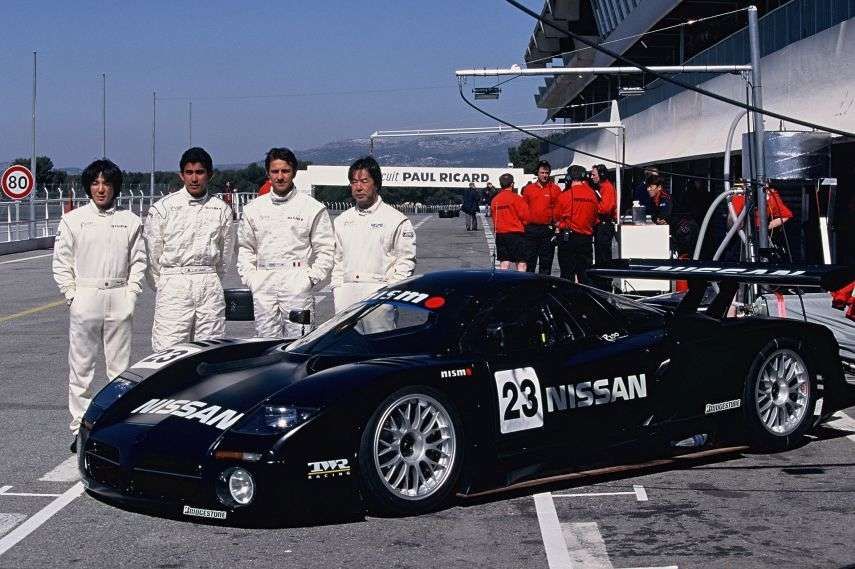
Just one of three cars reached the finish at the 1997 Le Mans
Two retirements, just #23 reached the finish
Both of those cars retired, struggling with overheating and gearbox problems. The #23 car, which started 21st on the grid, was the slowest of the three, but the only one to finish the race.
After two complete gearbox changes and 67 laps behind the winners, the #23 Nissan R390 GT1 finished the race in the 12th place overall and 5th in the GT1 class. The car was driven by Kazuyoshi Hoshino, Erik Comas, and Masahiko Kageyama.
Four upgraded cars came to Le Mans in 1998
At the 1998 24 Hours of Le Mans, Nissan came with four cars which were slightly upgraded compared to those from 1997. The 1998 R390 GT1 had a longer rear tail, a new rear wing, and a new rear diffuser. The Nissans were outpaced by strong competition in the qualifying, but in the endurance races the speed wasn’t the only thing that mattered. All four Nissans showed reliability and all four finished the race, taking 3rd, 5th, 6th, and 10th place.
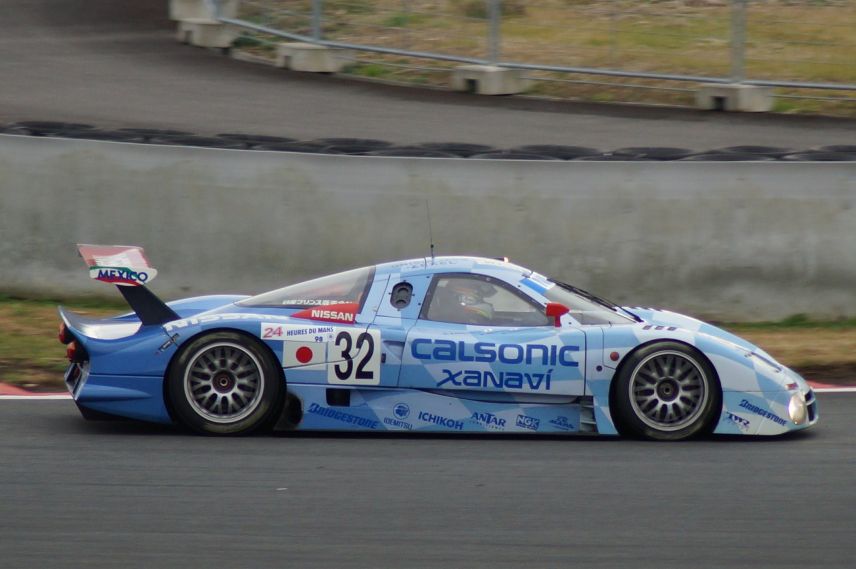
The #32 car reached the podium at Le Mans, behind two Porsche 911 GT1 cars
Chasing Porsche was an all-Japanese crew in Nissan cars
Behind the dominating Porsche 911 GT1, the all-Japanese crew in the #32 Nissan R390 GT1 took the historic podium for the Japanese manufacturer. The drivers were Aguri Suzuki, Kazuyoshi Hoshino, and Masahiko Kageyama. They rounded 347 laps around Circuit de la Sarthe, four less than the winners.
The second-best R390 GT1 was the #30 in fifth place, driven by John Nielsen, Michael Krumm, and Franck Lagorce. Right behind their back was the number 31 car driven by Jan Lammers, Erik Comas, and Andrea Montermini. The fourth car, driven by another all-Japanese crew, finished tenth. The drivers of the #33 Nissan were Satoshi Motoyama, Takuya Kurosawa, and Masami Kageyama.
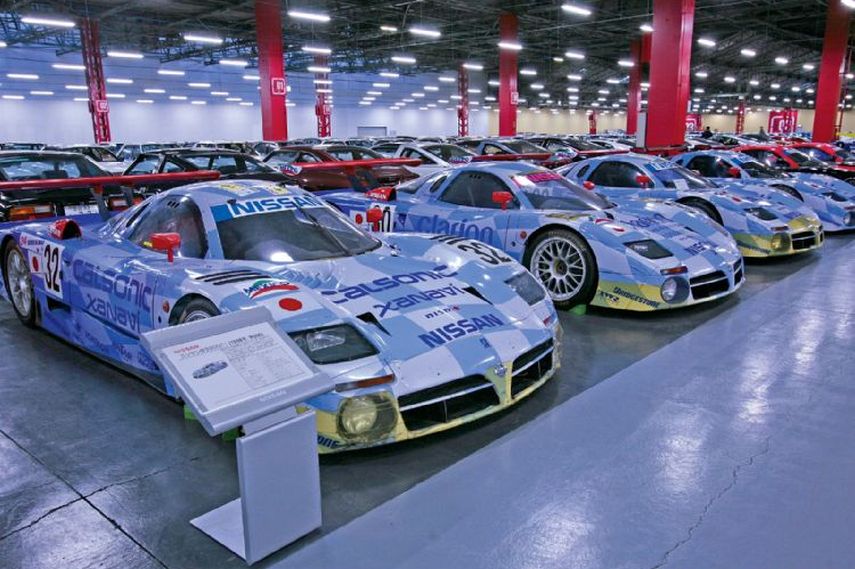
Nissan R390 GT1 exhibit in a museum
Leaving the best Le Mans years behind
The rules for 1999 were changed and the R390 GT1 was no more eligible to enter the Le Mans race, along with other GT1 cars. So, after just two participations at Le Mans and eight cars built, the R390 GT1 program was abandoned. In 1999, the R391 came as a replacement, but it lasted shortly because in 2000, Nissan turned off factory’s motorsport program.
Nissan never reached Le Mans podium again and it was the reason why R390 GT1 deserved a special place in the Nissan’s motorsport history, alongside the Skyline GT-R models.
Video : An advert for the Nissan R390 appearing for the first time in 1997
Photos: newsroom.nissan-europe.com, 24h-lemans.com, greavesmotorsport.com.


